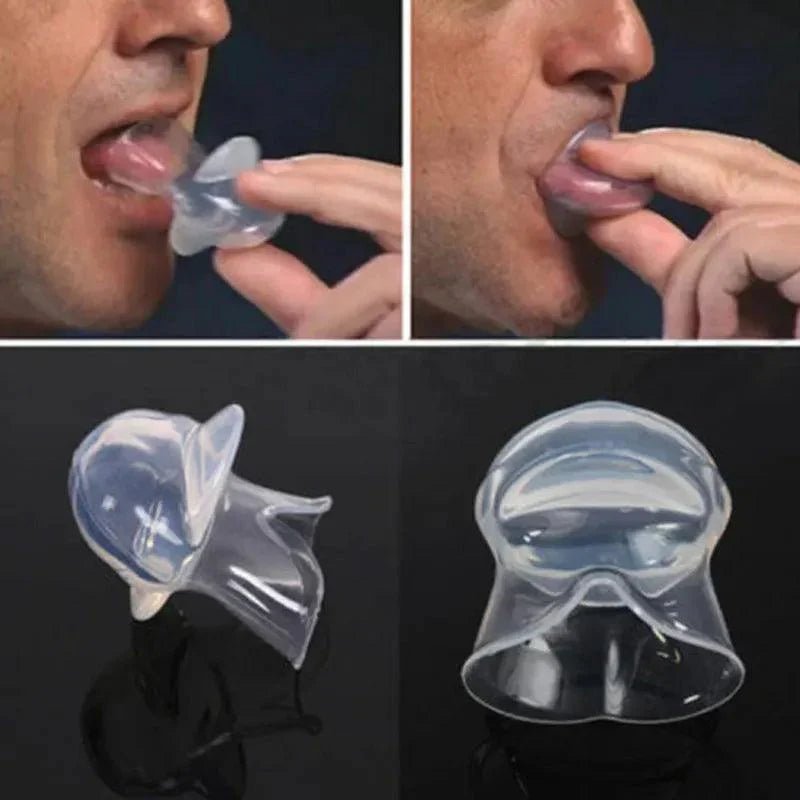Introduction
Snoring solutions are everywhere — nasal strips, mouthguards, CPAP machines, sprays. But among them, tongue stabilizing devices stand out as a non-invasive and surprisingly effective option.
So, if you’ve been wondering, "Do anti-snoring tongue devices really work?" — you're in the right place.
Let’s take a closer look at the science, effectiveness, and real-world results of using a product like the Device Apnea Aid.
What Is an Anti-Snoring Tongue Device?
Also known as a tongue stabilizing device (TSD) or tongue sleeve, this product holds the tongue forward during sleep to prevent it from obstructing the airway.
Unlike jaw-positioning mouthpieces (which push the jaw forward), the Device Apnea Aid focuses on tongue displacement, offering a simpler and more comfortable alternative.
The Problem with Tongue Collapse
During sleep, especially while lying on your back, your tongue can relax and fall back into the throat.
This causes:
-
Airway narrowing or blockage
-
Snoring sounds from throat vibrations
-
Breathing disruptions in apnea sufferers
The tongue device gently holds the tongue in place, reducing this collapse and helping maintain open airways throughout the night.
Why This Method Works
Studies show that tongue stabilizing devices can significantly:
-
Reduce snoring intensity and frequency
-
Improve oxygen levels in sleep apnea patients
-
Increase REM and deep sleep duration
-
Improve partner sleep satisfaction
And the best part? They don’t require machines, noise, or electricity — just consistent use and comfort.
Key Features of the Device Apnea Aid
- Made from high-grade medical silicone — hypoallergenic, soft, safe
- Portable & compact — no charging, no noise
- One-size-fits-most — fits the tip of the tongue comfortably
- Reusable — clean and use again and again
Comparing It to Electric CPAP Devices
CPAP Machines:
-
Powerful for severe apnea
-
Require electricity
-
Can be noisy
-
Involve bulky masks
Device Apnea Aid:
-
Ideal for mild to moderate apnea or snoring
-
Silent and cordless
-
Great for travel
-
Easy to clean and use
While CPAP is the gold standard for severe sleep apnea, tongue-based devices offer a great solution for lighter cases — or for those who can’t tolerate CPAP therapy.
Do These Devices Work for Everyone?
They work best for:
-
Mouth snorers
-
People with large tongues or soft palate vibration
-
Mild obstructive sleep apnea patients
They may be less effective for nasal snorers or those with jaw-related issues. That said, many users report excellent results within the first week of use — especially when paired with lifestyle changes like:
-
Sleeping on your side
-
Avoiding alcohol before bed
-
Losing excess weight
Tips for First-Time Users
-
It might feel strange for the first couple of nights — that’s normal.
-
Try it for 30–60 minutes before sleep to get used to the sensation.
-
Don’t bite or suck too hard — gentle tongue suction is all you need.
-
Clean it daily to prevent bacterial buildup.
What Users Are Saying
“I tried everything — nasal dilators, chin straps, apps. This device was the only one that didn’t feel like a chore. After 3 nights, I slept quietly — and so did my wife.”
– Mark H., Verified Buyer
“The silicone is soft and flexible. I travel often and this is WAY more practical than my bulky CPAP.”
– Laura J., Frequent Flyer
Final Thoughts
If you’ve been on the fence about trying a tongue-based anti-snoring device, let this be your sign.
The Device Apnea Aid proves that small, simple solutions can lead to big, lasting change — for your sleep, your energy, and your life.
No noise. No machines. Just results.
Shop the Device Apnea Aid now and experience the power of better sleep - without the hassle. Start your journey to peaceful nights today.

